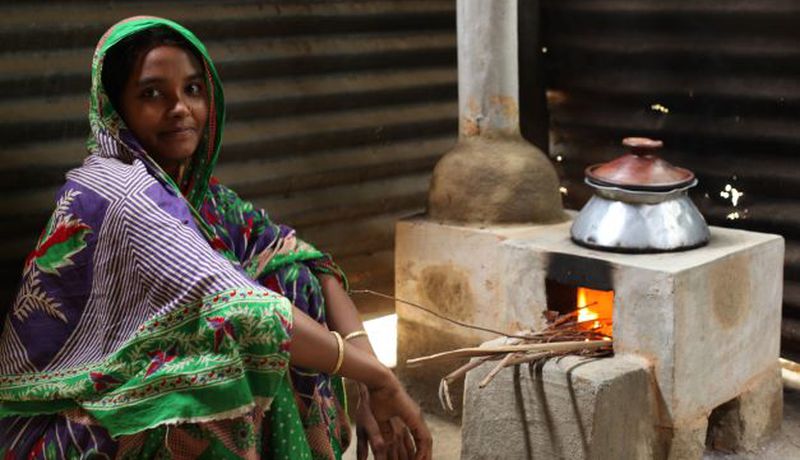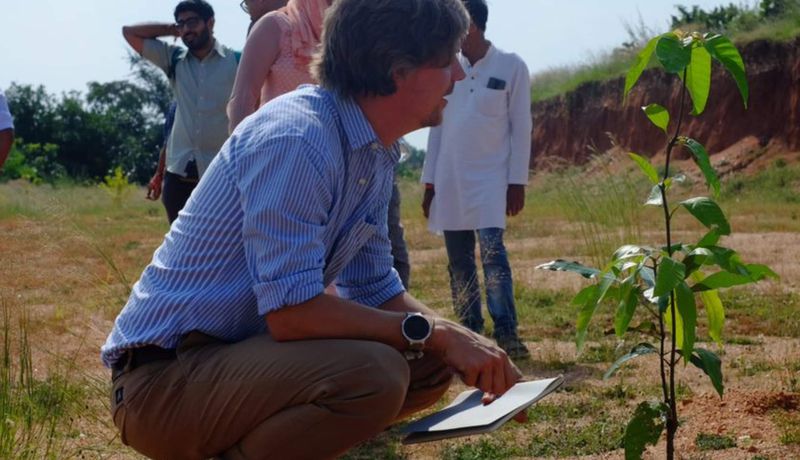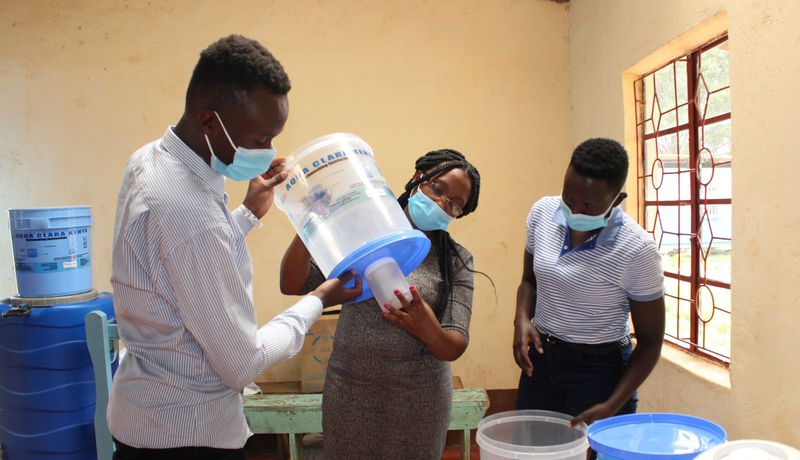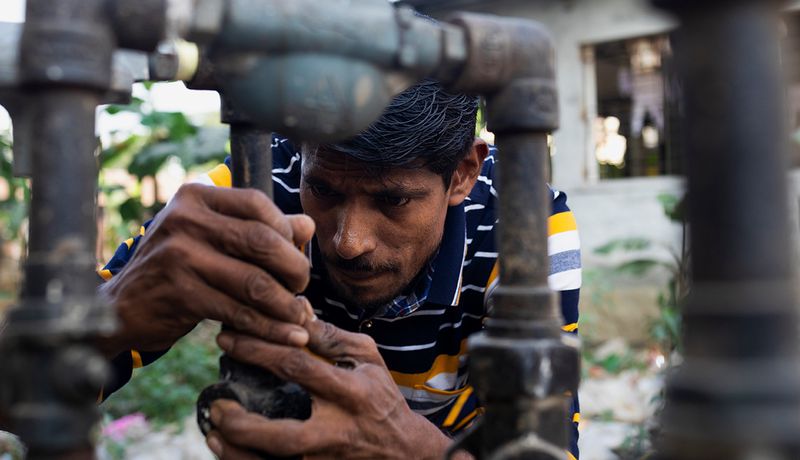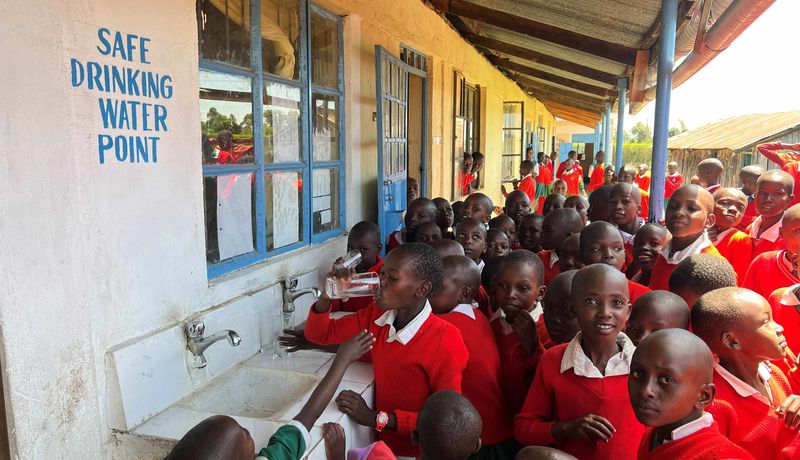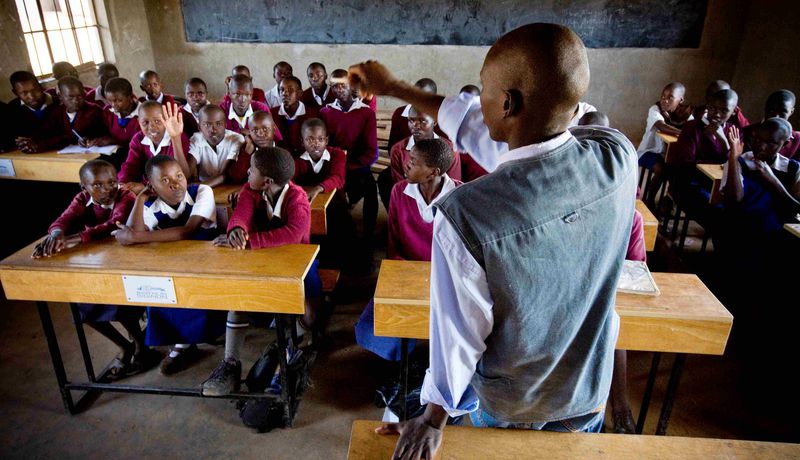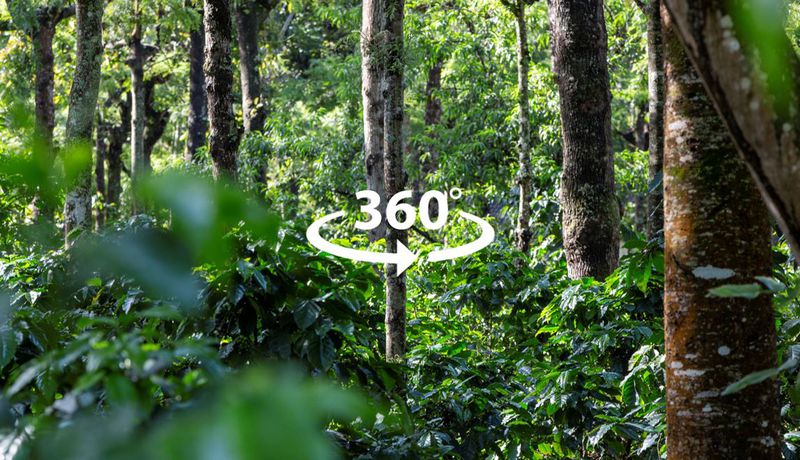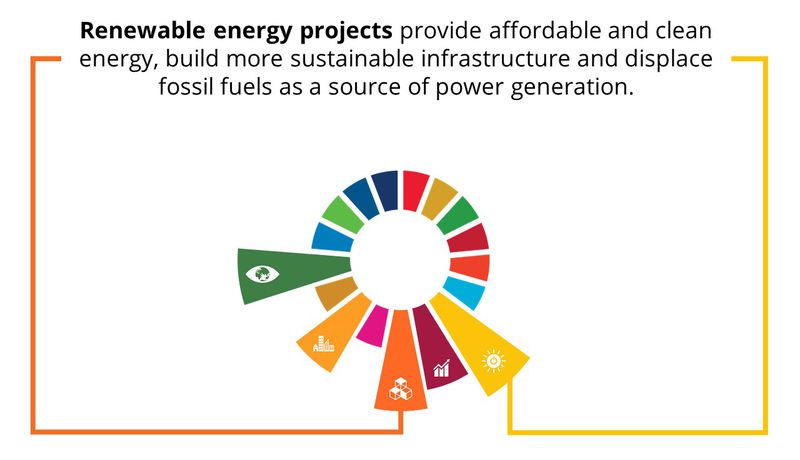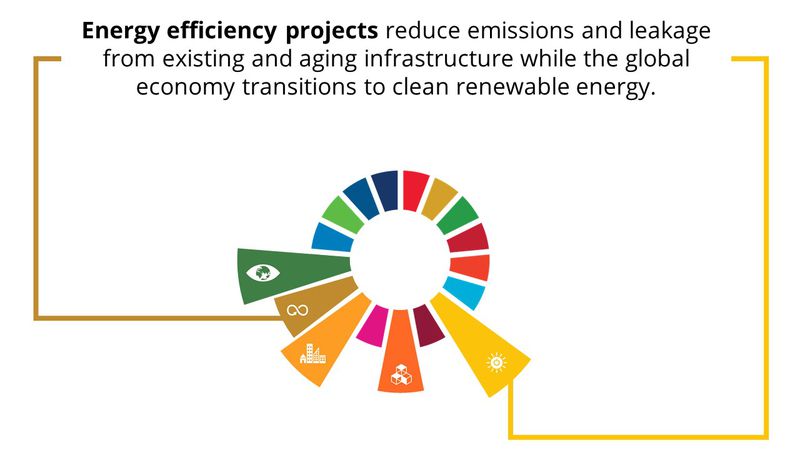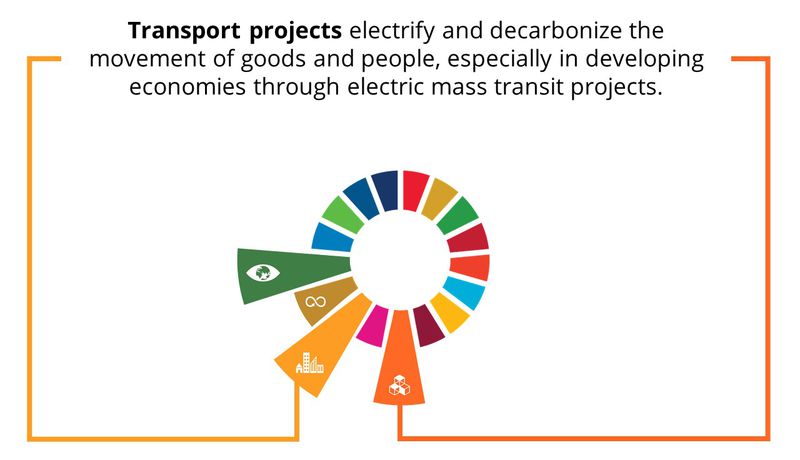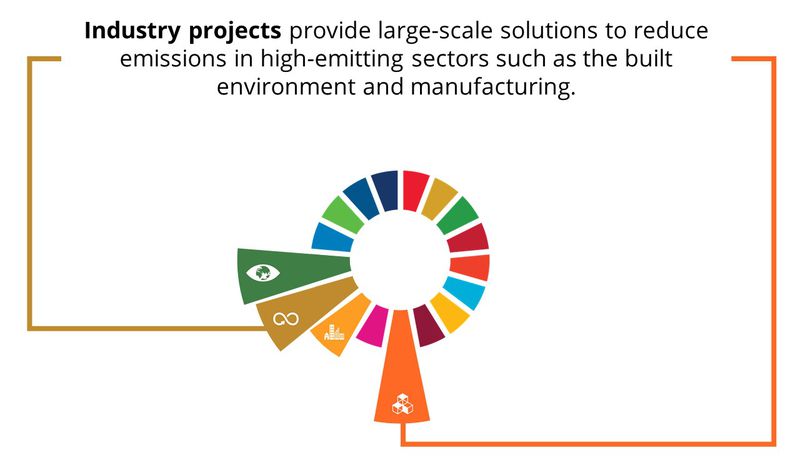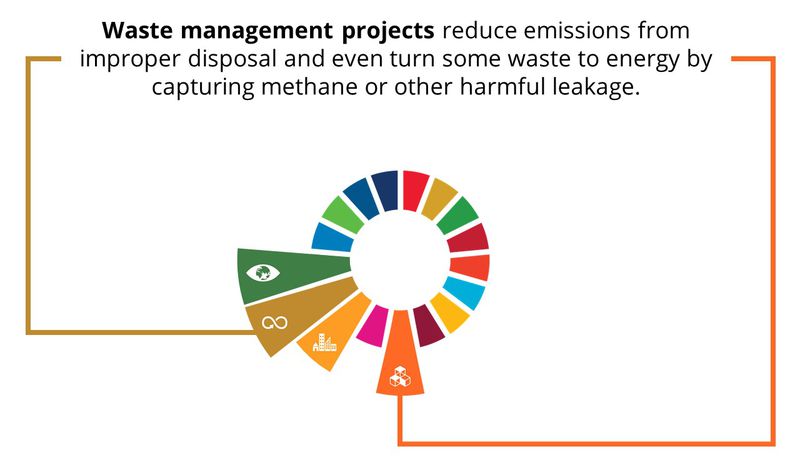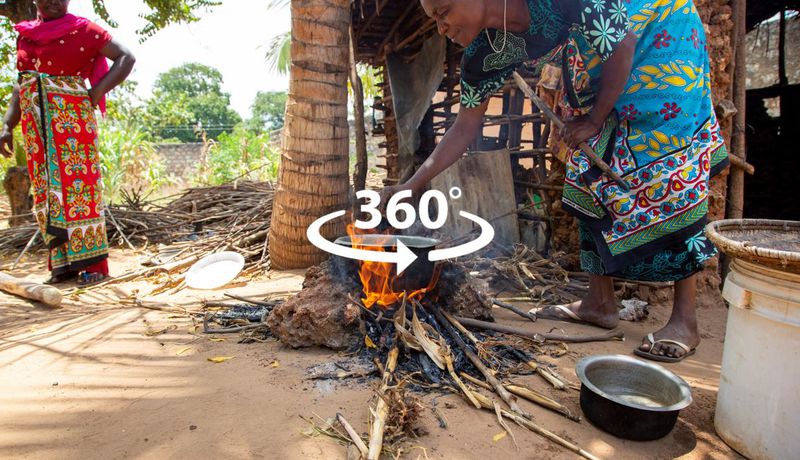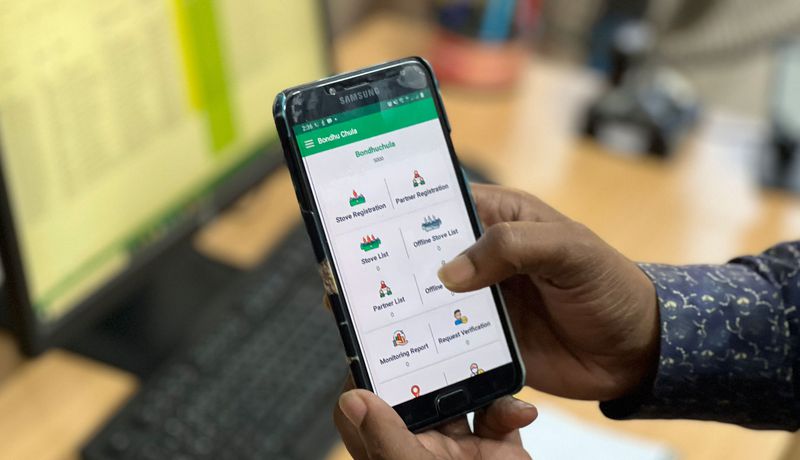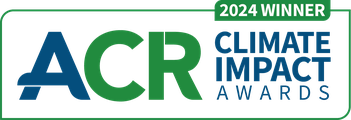What are carbon credits?
Carbon credits are generated by projects that have avoided or removed greenhouse gas emissions. Each credit represents one fewer tonne of carbon dioxide, or another greenhouse gas equivalent (CO2e), in the atmosphere. The projects rely on the sale of carbon credits in order to operate, and are independently audited to verify the tonnes of carbon emissions avoided or reduced.
How do carbon credits work?
Many organizations have ambitious climate targets. Meeting these often involves reducing the emissions associated with their own activities, while funding external decarbonization projects to offset the emissions that cannot yet be reduced.
This is where carbon credits come in. Because they are issued, monitored, and verified according to stringent, internationally recognized standards, they allow businesses to compensate for their unavoided emissions reliably and transparently.
Through their use of carbon credits, companies can provide stakeholders with proof that when they say they have offset carbon emissions they have done so.
Carbon credits enable critical finance to flow to decarbonization projects around the world, which is necessary to ensure that we meet our global climate goals, and support communities most impacted by climate change, yet least responsible.
Africa produces a very small fraction of the global greenhouse gas emissions. Yet, climate change threatens to expose up to 118 million of the poorest Africans to droughts, floods and extreme heat by 2030.
What is the difference between carbon credits and carbon offsets?
The terminology is not consistent, which can be confusing. Offsetting is when a company funds external carbon projects that remove, reduce, or avoid greenhouse gas emissions to compensate for their own.
Carbon credits are what the company purchases in order to offset its unavoided emissions. Each credit proves that one tonne of CO2e has been avoided or sequestered out of the atmosphere.
Importantly, we are referring exclusively to carbon credits in the voluntary carbon market, where businesses choose to invest in external carbon reduction projects.
There are also compliance markets, where government programs cap emissions, often aimed at high emitting sectors, and businesses therefore must take action. Compliance schemes work differently around the world, but in some a certain percentage of a company’s emissions can be covered through the purchase of carbon credits.
Who sells carbon credits?
Carbon projects need to be registered to an internationally recognized standard, which issues carbon credits once there has been independent verification that the project has generated the required emissions reductions or removals.
The credits are issued into a registry, which is a giant database holding all the details of each credit (i.e. standard, methodology, geography, vintage, date of issuance etc.). The credits are issued into the registry account of the project owner who is responsible for the Carbon Asset Development, i.e. all the processes that go into designing a project to issue carbon credits and then making sure they are audited and delivered. There may be more than one organization involved in setting up and running projects and it may include local community partners or corporate investors.
Following issuance, credits are then available to be bought and sold. Often credits are sold to a specialist carbon market ‘retailer’ - a company like Climate Impact Partners that has set up the systems and processes to assess carbon project quality, source the best projects, and create and manage portfolios of carbon credits for end buyers who want to meet more ambitious climate targets than they can deliver through internal reductions alone. The carbon credits enable them to compensate for their unavoidable emissions and contribute to the low carbon transformation in another country.
For a company to compensate for its unavoidable emissions, the carbon credit must be ‘retired’. This is done on a publicly available registry and means the standard counts the carbon credit as spent - it cannot be sold or used by anyone else - allowing the end buyer to officially offset one tonne of CO2e against its carbon footprint.
Who are the carbon project developers?
We work with project developers and organizations across the public, private, and social sectors who are implementing projects that make a measurable, positive impact on the climate while also delivering other social benefits.
- Existing Project Developers - Many of the project partners we work with have carried out successful carbon projects already. They have a presence on the ground working with local communities and are interested in maintaining or increasing the scale of their impact. We market and sell their carbon credits and, where needed, assist with carbon asset development and future project development activities (see The Lifecycle of a Carbon Credit, below).
- New Project Developers - We also work with partners who have a track record of delivering impact through project activities but are new to carbon projects. We help these partners assess, pilot, and optimize their project ideas. For those with proof of concept that meet our rigorous due diligence process, we work with them to meet all the requirements to become verified by an international standard. As long-term partners, we continue to provide support and access to carbon finance throughout the life of the project.
As experienced project developers ourselves, we also offer a project development solution to companies that want to make an early investment in projects to meet their future demand for carbon credits. We understand the carbon project process from beginning to end, offering high-quality projects that we originate and manage to maximize impact. This is an attractive option for corporates seeking to break new ground by building projects not available on the current market or to reduce uncertainty and prepare for future climate commitments.
Who are the standards that issue carbon credits?
There are various internationally-recognized standards. We only work with those that have been endorsed by the trade body ICROA (International Carbon Reduction and Offset Alliance), which has established a Code of Best Practice for the industry.
These include:
- Verified Carbon Standard (VCS)
- Gold Standard
- The American Carbon Registry (ACR)
- Climate Action Reserve (CAR)
- Plan Vivo
- Woodland Carbon Code
These standards establish methodologies for different types of projects to lay out how they should calculate the emissions reductions or removals they are delivering, and what qualifies for the sale of carbon credits. They establish rules for monitoring, reporting, verification, assess and approve organizations that are qualified to act as independent auditors, and track the issuance and retirement of credits.
You can find out more about the carbon standards and our approach to quality assurance here.
What do carbon projects do?
Carbon reduction
Some projects prevent carbon emissions from entering the atmosphere, such as those that help protect forests which are important carbon sinks, for example, forest conservation, or clean cooking projects which replace devices inefficiently burning wood or charcoal, with cleaner technology. Others replace fossil fuels with renewable energy, such as solar heating projects. These are often known as carbon reduction or avoidance projects.
Carbon removal
Some projects actively take CO2 out of the atmosphere, such as tree planting projects. Trees drawdown carbon by storing it in their roots, trunks and branches as they grow. Other projects that take emissions out the atmosphere include technological solutions like direct air capture (DAC) plants. Projects like these are known as removals projects.
We group carbon projects into three categories:
- sustainable infrastructure,
- health & livelihoods, and
- nature-based solutions.
Sustainable infrastructure projects
Sustainable infrastructure projects increase access to low carbon technologies, reducing dependency on fossil fuels. Some of these provide renewable energy or low carbon transport, while others improve efficiency in industry, the energy grid, or waste management.
For example, our energy efficiency project in the Bangladeshi capital Dhaka enhanced existing natural gas networks, equipping engineers to detect and repair leaks of the potent greenhouse gas methane. They identified and repaired 37,000 leaks, saving enough gas to power a 119 MW power station.
Health and livelihood projects
Health & livelihood projects help the sustainable development of communities that are most impacted yet least responsible for climate change, while simultaneously reducing global emissions. Projects help households and communities decrease indoor air pollution, provide clean water, and raise household income.
For example, Aqua Clara’s water filtration project in Kenya allows families affordable access to clean water without the need to boil it, thereby preventing firewood from being burned. This not only reduces emissions from the fires, but also protects people from the harmful effects of smoke inhalation.
Nature-based solutions projects
Nature-based solutions projects protect and enhance biodiversity to ensure our planet can thrive. They can avoid and reduce emissions through nature conservation and remove emissions through nature restoration.
For example, our nature-based carbon removal project in Guatemala which plants rubber trees for the sustainable harvesting of their sap. Without carbon finance, sustainable rubber tree plantations would not be an economically viable alternative to clear cutting forest land for cattle grazing or intensive crops like sugarcane. This project removes carbon from the atmosphere by reforesting degraded farmlands. More than 300 jobs have been created for the year-round maintenance of the rubber trees.
What determines the quality of a carbon credit?
To qualify as a carbon finance project it must meet some fundamental criteria, and pass Climate Impact Partners’ own stringent quality assurance requirements.
Specifically, high-quality projects must meet the following criteria to establish the quality of the carbon credit. These are designed to ensure quality in carbon market approaches to meet global climate goals:
- Real. The avoidance or removal of CO2e must actually occur.
- Measurable. It must be possible to reliably quantify an emission reduction.
- Additional. This means that there is a net emission reduction that would not have happened were it not for the sale of carbon credits. For example, if a project were already legally required to do what it is doing it would not count as additional, nor would it be additional if it can achieve all its funding through other mechanisms. The sale of carbon credits is required to enable the project to take place.
- Unique. Each tonne of CO2e avoided or removed must count towards only one carbon credit. Companies cannot double count the same carbon credit towards separate emission reductions targets.
- Permanent. This focuses on how long the carbon dioxide removed or avoided will be kept out of the atmosphere. To count as permanent, the reduction must be designed to last for at least 100 years, with robust measures to prevent and compensate for future events that might reverse the reduction. Projects that are at risk of reversal, such as forestry projects that may be damaged by wildfire, must allocate a portion of carbon credits - determined by risk factors - to a central buffer pool, which cannot be traded on the voluntary carbon market. The buffer pool acts as an insurance pot, ensuring there are spare carbon credits, in the event of future worst-case scenarios.
- Risk managed. This involves taking steps to ensure that the project is developed as envisaged, continues to follow evolving scientific evidence and meets the relevant standard’s rules, and doesn’t fall foul of changing legislation and regulations. Climate Impact Partners has considerable expertise here, with more than 25 years taking projects through the full cycle, from idea through to carbon credit retirement (see below).
- Independently verified. An independent auditor must review each project to validate that it follows the appropriate methodology that has been set by a standard, and to verify that the monitoring and measurement of emission reductions are accurate before carbon credits are issued.
Who buys carbon credits?
Recognizing the increasing risks of climate change on communities throughout the world, the sustainability of businesses, and a thriving planet for future generations, organizations of all sizes are setting public targets to reduce emissions and offset what they cannot avoid in order to meet ambitious climate targets.
By 2023, 66% of the Fortune Global 500 had made a significant climate commitment.
Many of these (35%) are Science-Based Targets that focus on internal reductions in line with the Paris Agreement’s goal of limiting global heating to 1.5C above pre-industrial levels. Others commit to further action now to compensate for unavoidable emissions through carbon credits which avoid emissions, such as avoided deforestation and clean cooking. And increasingly there are commitments (39%) to go further and aim to reach net zero in the future, where any remaining annual emissions generated by the business will be entirely cancelled out using removal only carbon credits.
These businesses want to demonstrate to their stakeholders that they have a committed and ambitious plan, and carbon credits are critical to meeting targets along the way. Investing in them provides a way to take immediate action towards long-term sustainability goals in a way that delivers carbon emissions reductions and supports the communities most impacted yet least responsible for climate change.
Climate Impact Partners works closely with corporate clients, understanding their climate strategy and how carbon finance for external projects can help them meet ambitious targets, complementing decarbonization goals with offsetting for unavoidable emissions. We match clients with projects aligned with their goals and values, while providing our project partners with finance that enables them to deliver measured and verified results.
We can also blend credits from high quality projects into customized portfolios that meet companies’ complex and growing requirements.
What are the advantages and disadvantages of investing in carbon credits?
Buying carbon credits once they’ve been issued is an immediate way of offsetting emissions and delivering immediate climate action. It is low risk, as the CO2e reduction has already taken place and the project has been audited to verify the carbon credits. In addition, some businesses want to invest in projects at an earlier stage by providing carbon financing for project development.
Both options enable companies to back initiatives that would not have been possible without their support. They also allow businesses to have a direct and positive impact on the other UN sustainable development goals (SDGs), such as providing access to clean water and sanitation, or improving gender equality.
Demand for carbon credits to meet net zero targets is set to increase 15-fold by 2030. Investing in project development enables businesses that have made future commitments to net zero to start investing now to meet those commitments, securing carbon credits to meet their future demand. It also gives companies more complete ownership of a project, as opposed to purchasing credits from an existing project which may be supported by multiple entities.
How much does a carbon credit cost?
Every carbon credit represents one tonne of CO2e reduced or removed, but not all carbon credits are equal in financial value. Factors that influence price, include: The type of project, its location, the benefits it delivers for local communities and biodiversity, the scale of the project and complexity of its work, the volume of similar credits on the market, and trends in best practice climate action.
The price of carbon credits over time reflects complex patterns of supply and demand. However, prices must be high enough to incentivize internal reductions and to ensure VCM projects can thrive and scale.
The lifecycle of a carbon credit
Phase 1: Planning and designing the carbon project
Carbon credits begin with an idea for a project that will avoid or remove GHG emissions through nature-based solutions, health & livelihood interventions, or sustainable infrastructure. We work with project developers to turn these ideas into a fully fleshed-out, formal Project Design Document (PDD) that can be registered with an internationally-recognized standard.
This involves rigorous due diligence that assesses the project’s feasibility and risks, and ensures its benefits are real, measurable, additional, permanent and unique.
We help the project implementation partner to assess the baseline emissions that would occur in future if this project did not happen. This is critical, as the difference between the emissions after the project is implemented and the baseline will be the eventual measure of how much carbon was avoided or removed.
We also carefully screen all our project partners, and take the project through a thorough due diligence review to assess and environmental, delivery, political and reputational risks that might emerge.
It is important at this stage to identify stakeholders who might be affected by the carbon project or whose support is necessary for it to succeed. We comprehensively evaluate any additional benefits to these stakeholders and how they align with the UN’s 17 Sustainable Development Goals (SDGs).
Once the project design document is ready it is audited by an independent third party – a Validation and Verification Body (VVB) - and a Standard to assess, validate, and verify the project under an approved methodology.
This simply means a scientifically robust approach to measuring emissions reductions. We have developed and lead-authored several of these ourselves, including the Gold Standard-approved methodology for assessing the impact of electric or metered cooking devices.
Lastly, the project is registered to the Standard.
Depending on the project type, they may have to review their baselines and re-validate every few years.
Phase 2: Developing and implementing the project
Once you have approval for the project, it’s time to get boots on the ground and make it happen.
Quality carbon projects usually require funds in the millions of dollars. Increasingly corporate buyers are getting involved in carbon financing at this stage to back projects that might not otherwise have happened, and to secure commitments to the carbon credits to meet their future climate targets.
We work carefully to match end buyers with suitable projects that fit their values, business requirements, and wider sustainability goals. Some of these we run as experienced project developers ourselves, while others are projects we partner with to market and sell the credits they issue.
In others, we guide the developer through the implementation and subsequent phases to help them maximize impact and keep the carbon project financially sustainable over its life cycle.
Phase 3: Carbon asset development
It takes considerable time to remove or avoid a tonne of CO2e emissions, but this is where the benefit gets felt.
After the carbon project has been implemented, we work with project developers to carefully monitor emissions and compare them to the baseline that was established in the Project Design Document. For energy projects this might be annually, while for forestry projects it could be every five years.
These reports are then verified by a VVB (approved third party auditor) and by the Standard that the project is registered with, ensuring continued transparency.
Once sufficient emissions reductions have been recorded and verified, the Standard issues carbon credits, each with a unique identification, into the registry account for the project.
Phase 4: Carbon credit retirement
Once a carbon credit has been issued, it may be sold and traded. Each credit has a unique serial number to eliminate double counting. This also enables transactions to be traced and recorded on the relevant registry.
The Voluntary Carbon Market plays an important role in incentivizing investment in carbon reduction and avoidance, by giving it a price. Many companies looking to offset their emissions enter at this stage, purchasing carbon credits to meet their particular climate targets.
For companies, that price of purchasing carbon credits to compensate for unavoidable emissions, also puts a price of carbon into the business and that can incentivize further action to deliver internal reductions and reduce that budget for compensation over time.
Whether the carbon credit was secured by the company that provided carbon finance or bought on the open market, it will eventually be retired.
Once this happens, the carbon credit is permanently taken out of circulation. It cannot be sold, traded, or used again. The tonne of CO2e can then be used to demonstrate how a company has gone above and beyond its internal reduction targets to take responsibility for its full carbon footprint, to deliver finance to projects that are critical for a global low carbon transformation, and to enable countries to meet their ambitious targets that meet the goals of the Paris Agreement.
The whole process of creating a carbon credit, from idea to retirement, can take as little as a year, or it can take well over 10. But counting the credits is hardly the end of the story.
Every tonne of greenhouse gases that isn’t in the atmosphere is one step closer to ending the climate crisis and protecting the planet and its people. In that sense, the impact of investing in a carbon credit now will be felt for generations to come.
Want to learn more about:
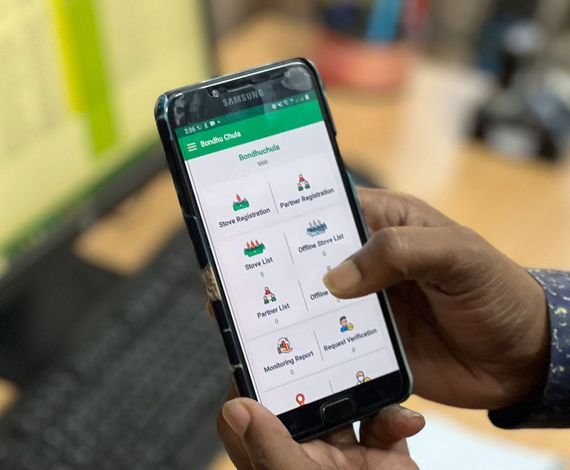
Generating Carbon Credits
We guide your team through the Measurement, Reporting and Verification process, to deliver high quality, verified carbon credits.
Read more
Carbon Credit Sales
We match your carbon credits with the right buyers, at the right price through our extensive network of corporate clients.
Read more


